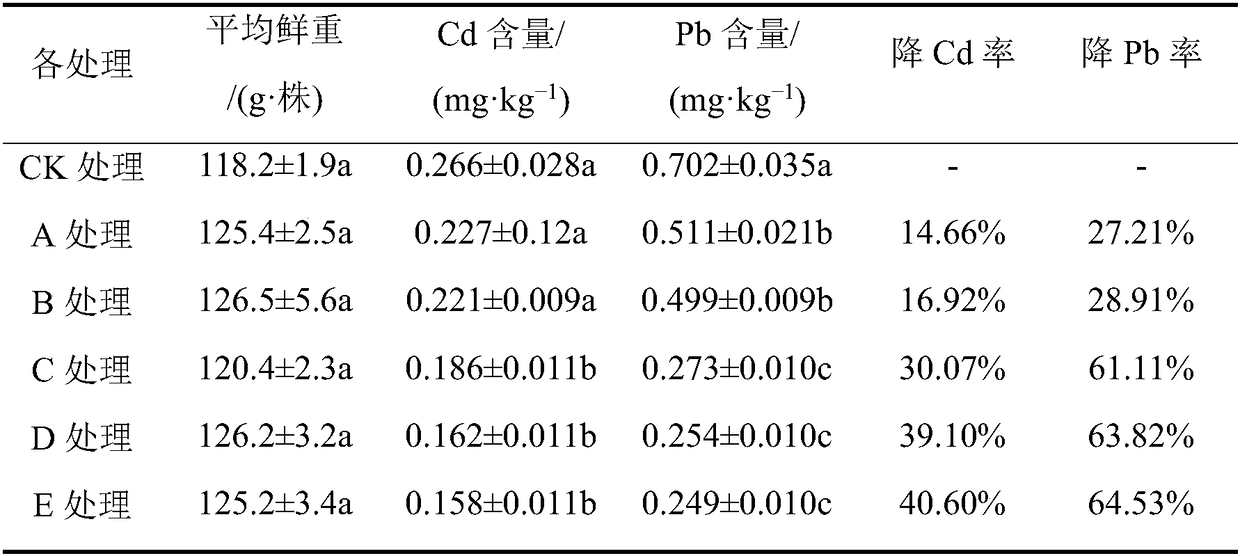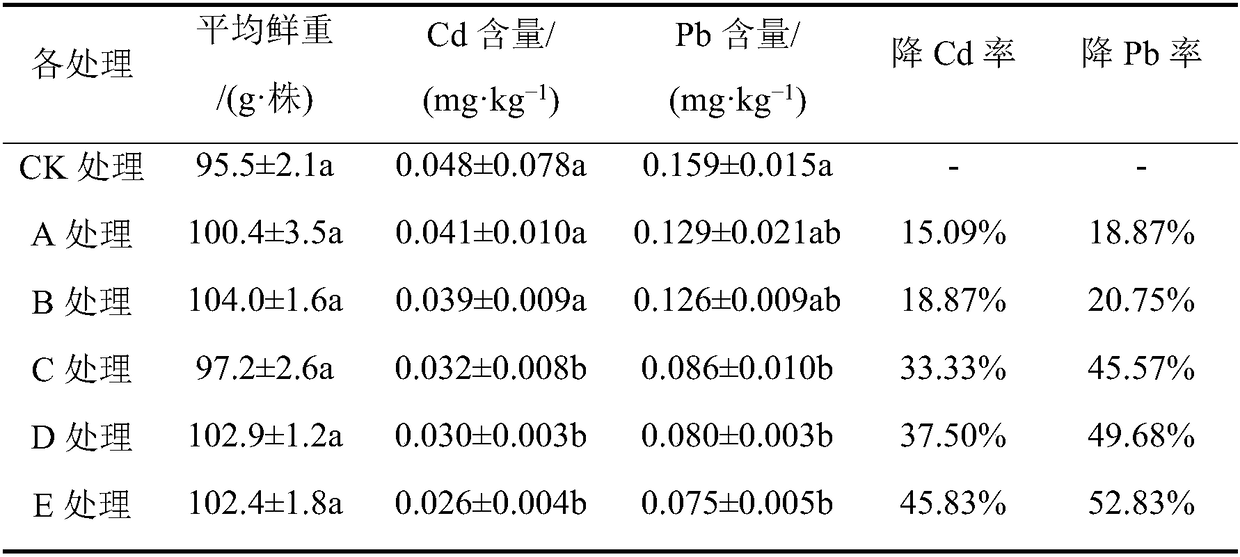Biochar-based soil conditioner and application thereof
A soil conditioner, biochar technology, applied in soil conditioning materials, applications, fertilizer mixtures, etc., can solve the problems of reducing the content of heavy metals in the edible part of vegetables, affecting the safety of vegetable products, increasing soil fertility, etc., and achieving good long-term effect. , easy to popularize and improve the effect of soil quality
- Summary
- Abstract
- Description
- Claims
- Application Information
AI Technical Summary
Problems solved by technology
Method used
Image
Examples
Embodiment
[0035] Example experimental design:
[0036] The material of the present embodiment biochar-based conditioner by weight percentage: 30% to 35% of biochar, 5% of diammonium phosphate, 5% of potassium sulfate, 10% of calcium magnesium phosphate fertilizer, 5% of humic acid, and 25% of limestone 30%, dolomite 15%, mix directly. Among them, the preparation method of biochar is that rice husks are carbonized at 400-500°C under oxygen protection under the protection of nitrogen, pulverized with a pulverizer or ball mill, and passed through a 1mm sieve to obtain rice husk biochar (this case is also referred to as biochar for short).
[0037] On the same piece of dry land soil, different treatment modes were set: CK treatment: experimental blank control, no treatment; A treatment: single application of rice husk biochar; B treatment: single addition of nutrients (biochar, diammonium hydrogen phosphate, Potassium sulfate, calcium magnesium phosphate fertilizer, humic acid, the mass ra...
Embodiment 2
[0042] Embodiment two: test crop capsicum
[0043] EXAMPLES The experimental design is similar to that of Example 1, the difference is that each of the treatments described above is used for the cultivation of capsicum.
[0044] When mature, the biomass of each treatment pepper and the content of heavy metals in pepper fruit were measured, and the heavy metal content was determined by ICP-AES after mixed digestion with nitric acid-perchloric acid. The results are shown in Table 3.
[0045] Table 3 Biomass of pepper and heavy metal content in fruit of each treatment
[0046]
[0047] It can be seen from Table 3 that compared with the control CK, treatments A, B, D and E can increase the average fresh weight ratio of pepper per plant by 5.13%-8.90%, while treatment C can only increase the average fresh weight ratio of pepper per plant by 1.78% %, the study found that through the synergy between the components described in the present invention, the adverse effects of inorga...
PUM
 Login to View More
Login to View More Abstract
Description
Claims
Application Information
 Login to View More
Login to View More - R&D
- Intellectual Property
- Life Sciences
- Materials
- Tech Scout
- Unparalleled Data Quality
- Higher Quality Content
- 60% Fewer Hallucinations
Browse by: Latest US Patents, China's latest patents, Technical Efficacy Thesaurus, Application Domain, Technology Topic, Popular Technical Reports.
© 2025 PatSnap. All rights reserved.Legal|Privacy policy|Modern Slavery Act Transparency Statement|Sitemap|About US| Contact US: help@patsnap.com



